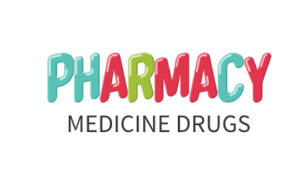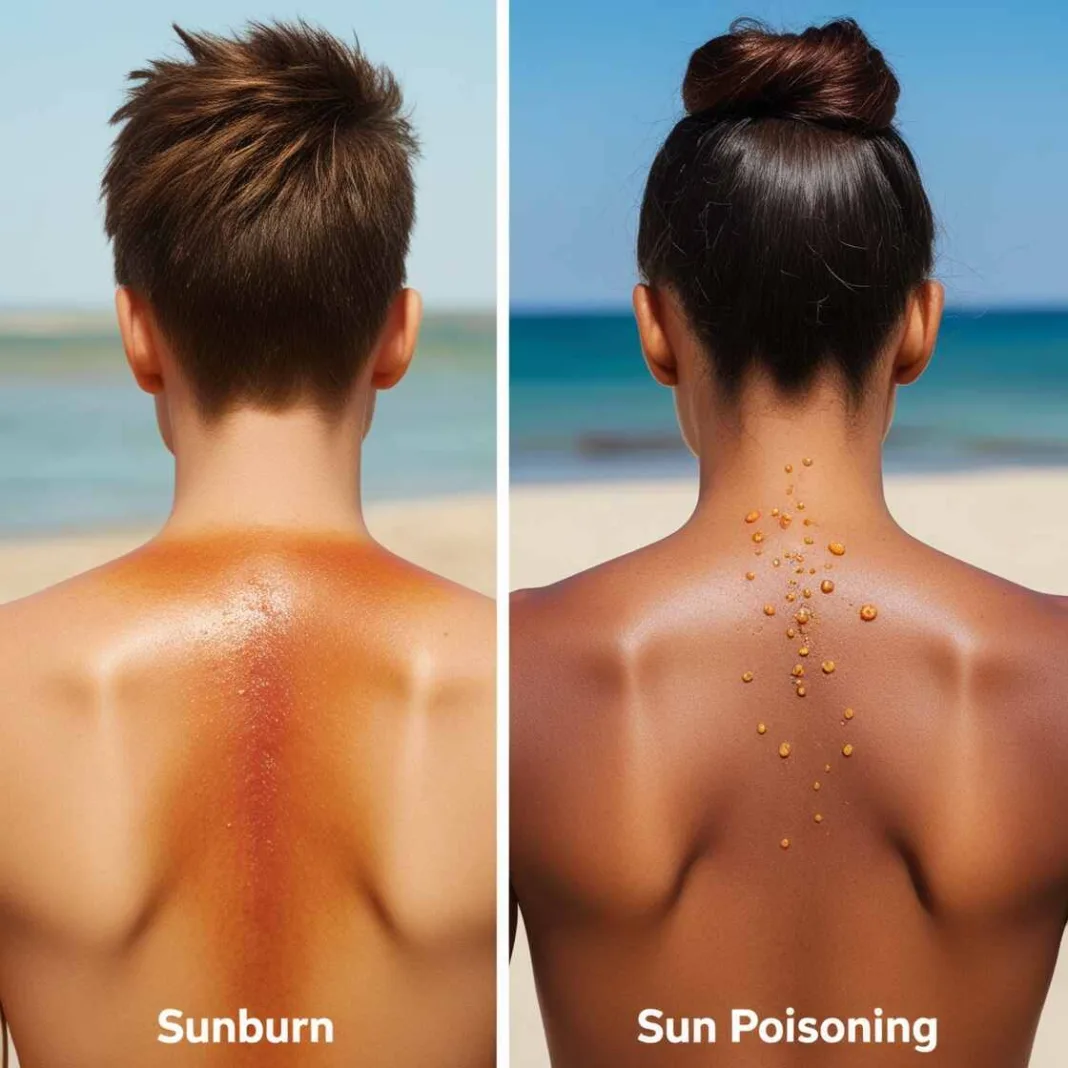What is Sun Poisoning | How to Know If you Have Sun Poisoning ? | Sun Poisoning vs Sunburn
Sun poisoning is a severe form of sunburn that results from prolonged exposure to ultraviolet (UV) rays, leading to more than just superficial skin damage. It is a type of photo-toxic reaction, often characterized by intense redness, swelling, blisters, and systemic symptoms like fever, nausea, and chills. Unlike a typical sunburn, which affects only the outer layer of the skin, sun poisoning can cause second-degree burns or deeper tissue damage. Sun poisoning typically occurs after prolonged exposure to the sun without adequate protection, especially during peak UV hours (10 a.m. to 4 p.m.).
While most sunburns cause temporary discomfort, sun poisoning is more serious and can lead to complications like dehydration, heat exhaustion, or even sunstroke. The severity of the condition is heightened when the person has a sensitive skin type, is taking certain medications (like antibiotics), or has an existing skin condition that increases sensitivity to the sun.
Can you Die from Sun Poisoning
Actually No , you will not Die but it can involve second or third-degree burns with deep tissue damage which can cause Skin cancer if not treated on time
How to Know if You Have Sun Poisoning ?
Sun poisoning symptoms are more severe than those of regular sunburn. The signs typically appear within a few hours after sun exposure and can worsen over the next 24–48 hours. Some common symptoms include:
- Severe redness and inflamed skin.
- Blisters that may be large or filled with fluid.
- Swelling and intense skin pain or tenderness.
- Fever above 101°F (38.3°C).
- Nausea, vomiting, or dizziness.
- Headache and fatigue.
- Chills or shivering.
If you experience any of these symptoms after spending a prolonged period in the sun, it’s important to seek medical attention, especially if the symptoms worsen or if you’re unable to stay hydrated. Immediate care, including cooling the skin, drinking fluids, and using pain-relieving medications, can help reduce discomfort and prevent further complications.
Difference Between Sunburn and Sun Poisoning | Sun Poisoning vs Sunburn🌞 Comparison Analysis📊
| Feature | Sunburn | Sun Poisoning |
|---|---|---|
| Definition | Skin damage caused by overexposure to UV rays. | Severe reaction to UV exposure, including symptoms like blistering and systemic effects. |
| Severity | Generally mild to moderate. | More severe, can cause systemic symptoms like nausea, chills, and dizziness. |
| Symptoms | Redness, pain, swelling, peeling. | Blisters, severe redness, swelling, headache, nausea, dizziness, fever. |
| Skin Damage | First-degree burn (outer layer of skin). | Can involve second or third-degree burns with deep tissue damage. |
| Duration | Usually lasts a few days to a week. | Can last from several days to weeks, with lingering symptoms. |
| Treatment | Topical creams, aloe vera, cold compresses. | May require medical intervention, including pain relievers and hydration. |
| Prevention | Sunscreen, hats, protective clothing. | Same as sunburn, but avoiding prolonged exposure in the sun is crucial. |
Sunburn vs Sun Poisoning Symptoms Analysis 📊| How Long Does Sun Poisoning Last ⏱️?
Sunburn and sun poisoning are both caused by overexposure to UV rays, but they differ in severity. Sunburn typically involves mild symptoms like redness, pain, and peeling of the skin. It affects only the outer layer and usually heals within a few days. In contrast, sun poisoning is more severe and involves intense symptoms such as deep redness, swelling, large blisters, and systemic effects like fever, nausea, and dizziness. Sun poisoning may also lead to second-degree burns and requires more extensive treatment.
| Symptoms | Sunburn | Sun Poisoning |
|---|---|---|
| Redness | Mild to moderate redness in affected areas. | Severe redness, often with blotchy or intense patches. |
| Pain | Burning or stinging sensation. | Intense pain that can feel deep and throbbing. |
| Swelling | Mild swelling in the affected skin. | Significant swelling, especially in severe cases. |
| Peeling | Skin begins to peel a few days after exposure. | Skin may peel, but this occurs later in the recovery process. |
| Blisters | Rare, only in very severe cases. | Frequent, large blisters filled with fluid, often present within hours. |
| Fever | Rare, generally no fever. | Fever can develop, often above 101°F (38.3°C). |
| Nausea | Not typically a symptom. | Nausea and vomiting are common, especially in severe cases. |
| Chills | Not usually present. | Chills and shaking may occur due to fever and dehydration. |
| Headache | Mild headache in some cases. | Severe headache, often accompanied by dizziness or lightheadedness. |
| Dizziness | Rare, but may occur with dehydration. | Common, especially with sun poisoning, due to dehydration or fever. |
| Fatigue | Mild tiredness or fatigue. | Extreme fatigue or weakness, often feeling faint or exhausted. |
How Long Does Sun Poisoning Last?
The duration of sun poisoning varies depending on the severity of the exposure and the individual’s response. Generally, sun poisoning lasts anywhere from a few days to two weeks. The most intense symptoms, such as fever and blisters, typically last for 2-3 days, while skin healing and peeling can take up to 1-2 weeks. During recovery, it’s important to stay hydrated, avoid further sun exposure, and seek medical help if symptoms worsen or complications arise.
How do you Treat Sun Poisoning?🕸️ | Sun Poisoning vs Sunburn Treatment 🌞
Sun poisoning is a severe reaction to excessive sun exposure that requires immediate care. Treatment focuses on alleviating symptoms and preventing complications.
| Treatment Approach🩺 | Sunburn🌞 | Sun Poisoning⛱️ |
|---|---|---|
| Cool the Skin | Apply cool compresses or take a cool bath. | Apply cool compresses, take cool baths to reduce pain. |
| Moisturize | Use aloe vera gel or moisturizing lotions. | Use aloe vera gel, but consult a doctor for stronger treatments. |
| Hydration | Drink plenty of water to stay hydrated. | Drink fluids (water, electrolyte drinks) to combat dehydration. |
| Pain Relief | Over-the-counter pain relievers (ibuprofen, aspirin). | Over-the-counter pain relievers (ibuprofen, aspirin) or stronger prescription meds. |
| Avoid Further Sun Exposure | Stay out of the sun until the burn heals. | Stay out of the sun until recovery and avoid any additional exposure. |
| Topical Steroids | Mild hydrocortisone creams can reduce inflammation. | Hydrocortisone or stronger corticosteroid creams may be recommended. |
| Blister Care | If blisters appear, avoid popping them to prevent infection. | Medical treatment may be needed to manage blisters, ensure they don’t rupture. |
| Cold Compresses | Apply cold compresses or ice packs to reduce swelling. | Apply cold compresses to relieve pain and lower fever. |
| Antihistamines | Antihistamines can help reduce itching and inflammation. | Antihistamines may be used for itching and to manage allergic reactions. |
| Monitor for Infection | If blisters or open wounds develop, use antibiotic ointment to prevent infection. | Monitor blisters closely for signs of infection; antibiotics may be prescribed. |
| Seek Medical Help | Generally not needed unless severe. | Seek immediate medical attention for severe cases of sun poisoning. |
Related Fun ⏱️
Ratan Tata ‘s Top 3 Life Formulas🧮That Are More Precious 💎For Growing Youth !
What Does Chamomile Tea Taste Like☕? | 1st Time Feelings👅
# difference between sunburn and sun poisoning #what is sun poisoning #how long does sun poisoning last #can you die from sun poisoning #how to know if you have sun poisoning, #sun poisoning vs sunburn

